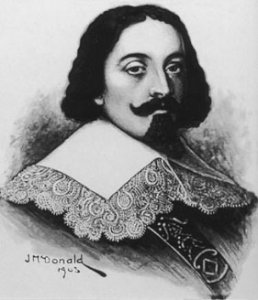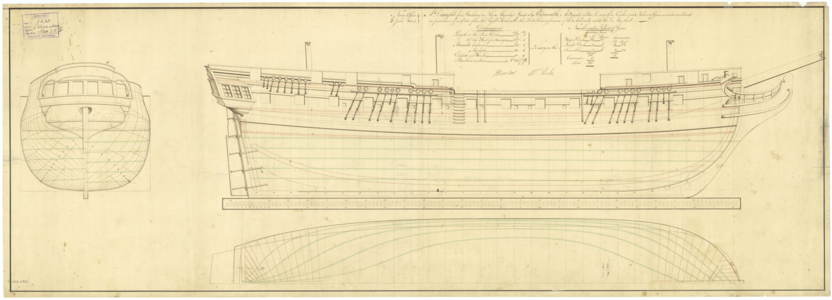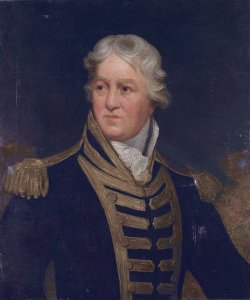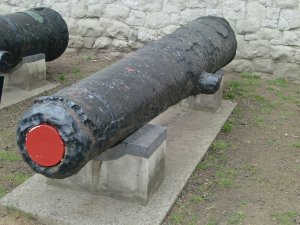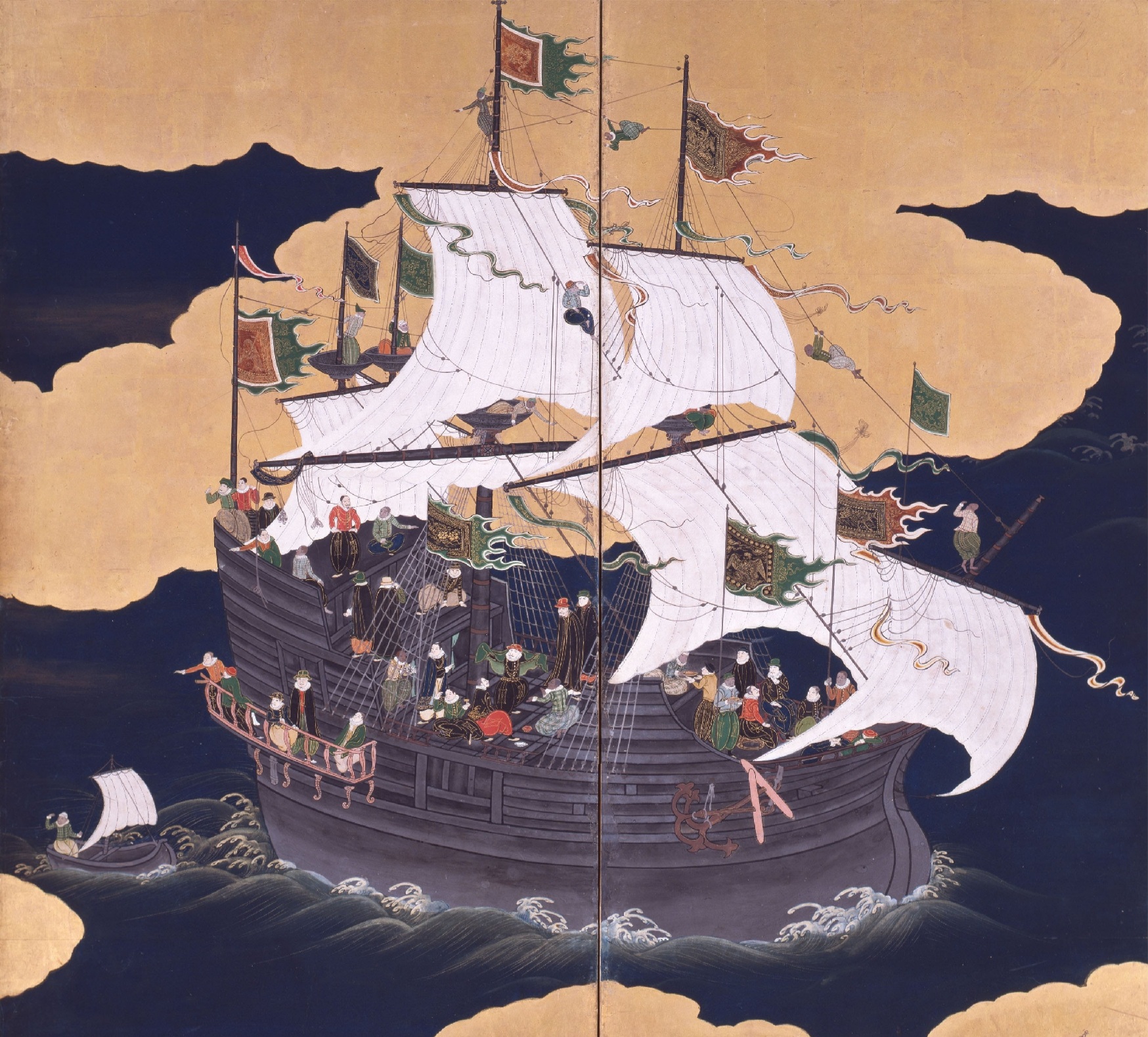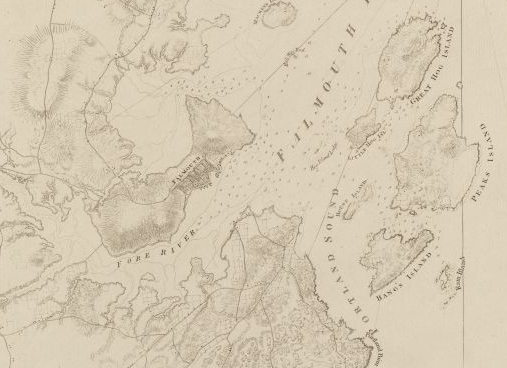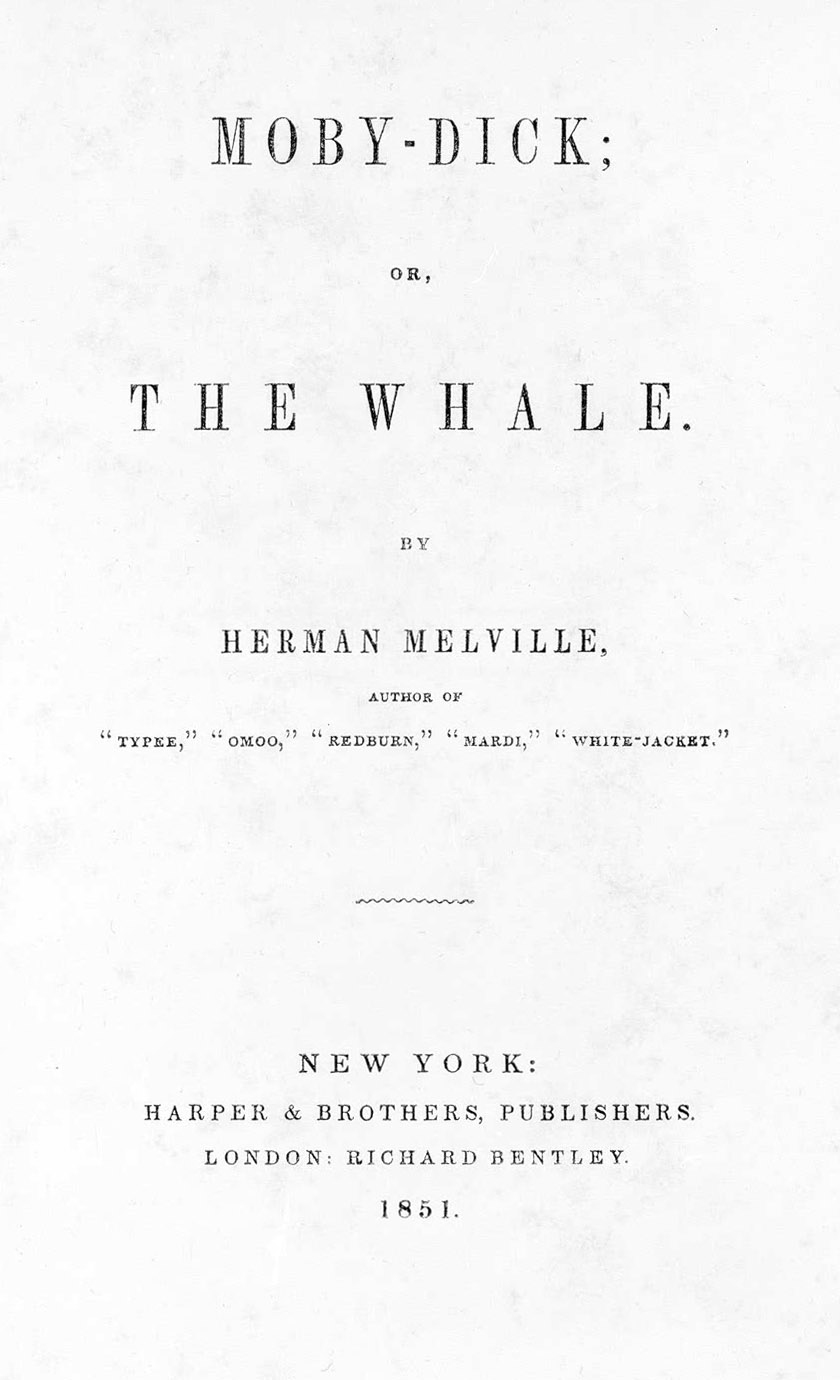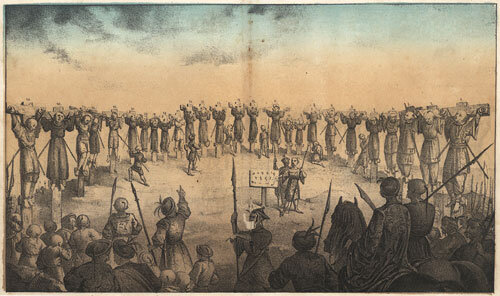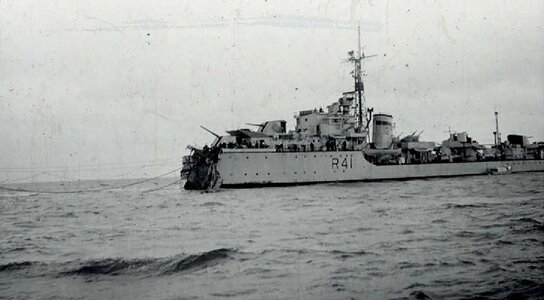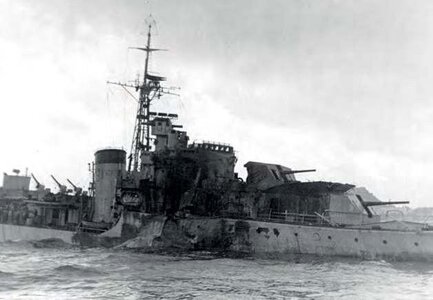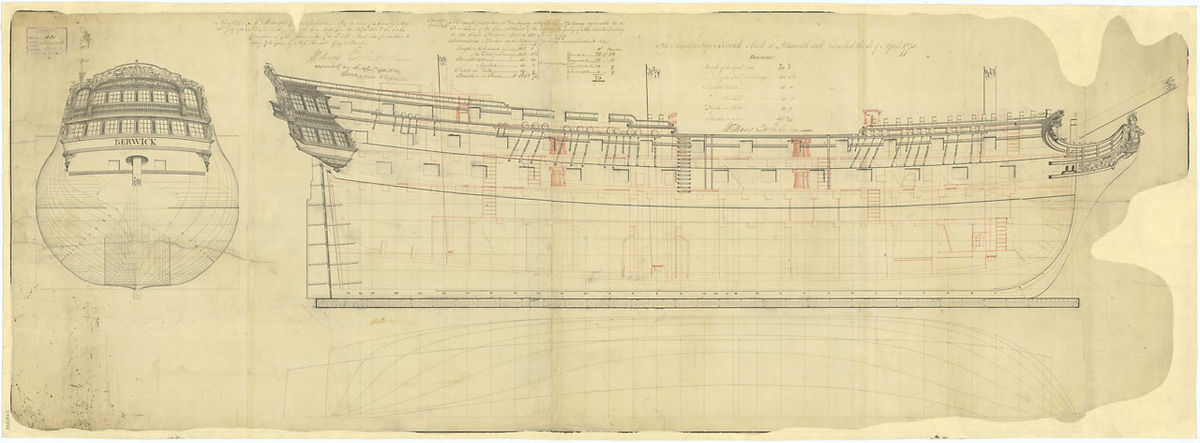Today in Naval History - Naval / Maritime Events in History
4th of October
some of the events you will find here,
please use the following link where you will find more details and all other events of this day .....
1710 - Action of 4 October 1710 / Battle of Køge Bay

This indecisive Battle of Køge Bay took place on 4 October 1710, during the Great Northern War, in Køge Bay, just south of Copenhagen. Denmark had 26 ships of the line and 5 frigates with 1808 guns, and Sweden had 21 ships of the line and several frigates with 1512 guns. The Danish ship Dannebroge exploded and of the 550-man crew only 9 survived. The Swedish ships Tre Kronor and Prinsessan Ulrika Eleonora ran aground. Because of the weather the battle could not continue. However, the Swedish fleet managed to sink and capture a Danish convoy of transport ships that were supposed to embark a Russian invasion force in Danzig. The action in Køge Bugt checked those Russian invasion plans of Sweden.

1744 - Loss of the HMS Victory (1737 - 100), Cptn. Samuel Faulkner. Admiral Sir John Balchen and 1,100 men lost.
HMS Victory was a 100-gun first-rate ship of the line of the Royal Navy, built to the dimensions of the 1733 proposals of the 1719 Establishment at Portsmouth Dockyard, and launched on 23 February 1737.


Scale: 1:34.3. A contemporary full hull model of the 'Victory' (1737), a 100-gun three-decker first-rate ship of the line.
1744 - Admiral Sir John Balchen died and 1,100 men lost their life with sinking HMS Victory
Admiral Sir John Balchen (2 February 1670 – 4 October 1744), sometimes written as Balchin, was an officer of the British Royal Navy with a long and distinguished career during the late 17th and early 18th centuries. In the course of his service at sea, Balchen saw action in numerous battles against the French and Spanish navies across 60 years and three separate wars. He was twice captured by the French in action, both times being exonerated and commended for the defence of his ships against overwhelming odds.
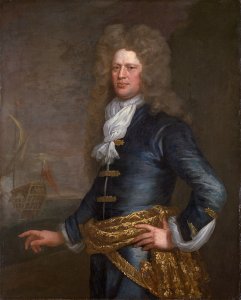
1770 – Launch of French Victoire, a 74 gun Bien-Aimé class Ship of the Line

detail: Victoire at the Toulon naval review of 1777. She is incorrectly depicted as a three-decker; Victoire was actually a 74-gun, with two batteries.
1780 - 13 Royal Navy ships foundered in the great hurricane in the West Indies over 8 days - including HMS Thunderer (1760 - 74), HMS Phoenix (1759 - 44), HMS Barbadoes (1778 - 14)
HMS Thunderer was a 74-gun third rate ship of the line of the Royal Navy, launched on 19 March 1760 at Woolwich. She earned a battle honour in a single-ship action off Cadiz with the French ship Achille (64 guns) in 1761, during the Seven Years' War.

Model of a 74-gun ship, 3rd rate, cz. 1760. Thought to be either HMS Hercules from 1759 or HMS Thunderer from 1760.
1782 – French Bizarre, a 64 gun Ship of the Line wrecked
Bizarre was a 64-gun ship of the line of the French Navy. She was present at two major battles, and was wrecked in 1782.

1810 - Launch of italian - French Favorita - Favorite, a 44 gun Pallas-class frigate
Favorite was the 44-gun Pallas-class frigate Favorita of the Navy of the Kingdom of Italy. The Italians exchanged her to the French Navy for the three brigs Cyclope, Écureuil and Mercure.
On 12 March 1811, Favorite, under Bernard Dubourdieu, led a frigate squadron to raid the British commerce raider base of the island of Lissa. The squadron encountered William Hoste's frigate squadron, leading to the Battle of Lissa.
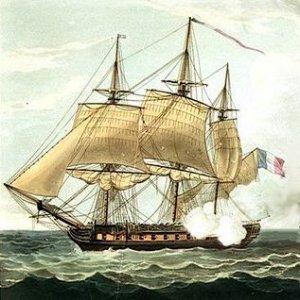
Clorinde, sister ship of Favorite
1821 - Lt. Robert F. Stockton sails aboard USS Alligator from Boston to West Africa, to suppress the African slave trade and select and acquire territory to resettle former slaves in their native continent.
The third USS Alligator was a schooner in the United States Navy.
Alligator was laid down on 26 June 1820 by the Boston Navy Yard; launched on 2 November 1820; and commissioned in March 1821 — probably on the 26th — with Lieutenant Robert F. Stockton in command. On 6 June 1996, the site of its wreck was added to the U.S. National Register of Historic Places.

1855 - Launch of French Algesiras, a 90 gun Algesiras Sub-class of Napoleon-class Ship of the Line
The Algésiras was a 90-gun steam ship of the line of the French Navy, lead ship of her class. She was the first production ship built on the principles of the "fast ship of the line" pioneered by Napoléon.

4th of October
some of the events you will find here,
please use the following link where you will find more details and all other events of this day .....
Naval/Maritime History - 27th of August - Today in Naval History - Naval / Maritime Events in History
Today in Naval History - Naval / Maritime Events in History 2 October 1942 – World War II: Ocean Liner RMS Queen Mary accidentally rams and sinks her own escort ship, HMS Curacoa, off the coast of Ireland, killing 337 crewmen aboard the Curacoa. HMS Curacoa was a C-class light cruiser built...
shipsofscale.com
1710 - Action of 4 October 1710 / Battle of Køge Bay
This indecisive Battle of Køge Bay took place on 4 October 1710, during the Great Northern War, in Køge Bay, just south of Copenhagen. Denmark had 26 ships of the line and 5 frigates with 1808 guns, and Sweden had 21 ships of the line and several frigates with 1512 guns. The Danish ship Dannebroge exploded and of the 550-man crew only 9 survived. The Swedish ships Tre Kronor and Prinsessan Ulrika Eleonora ran aground. Because of the weather the battle could not continue. However, the Swedish fleet managed to sink and capture a Danish convoy of transport ships that were supposed to embark a Russian invasion force in Danzig. The action in Køge Bugt checked those Russian invasion plans of Sweden.
1744 - Loss of the HMS Victory (1737 - 100), Cptn. Samuel Faulkner. Admiral Sir John Balchen and 1,100 men lost.
HMS Victory was a 100-gun first-rate ship of the line of the Royal Navy, built to the dimensions of the 1733 proposals of the 1719 Establishment at Portsmouth Dockyard, and launched on 23 February 1737.
Scale: 1:34.3. A contemporary full hull model of the 'Victory' (1737), a 100-gun three-decker first-rate ship of the line.
1744 - Admiral Sir John Balchen died and 1,100 men lost their life with sinking HMS Victory
Admiral Sir John Balchen (2 February 1670 – 4 October 1744), sometimes written as Balchin, was an officer of the British Royal Navy with a long and distinguished career during the late 17th and early 18th centuries. In the course of his service at sea, Balchen saw action in numerous battles against the French and Spanish navies across 60 years and three separate wars. He was twice captured by the French in action, both times being exonerated and commended for the defence of his ships against overwhelming odds.

1770 – Launch of French Victoire, a 74 gun Bien-Aimé class Ship of the Line
detail: Victoire at the Toulon naval review of 1777. She is incorrectly depicted as a three-decker; Victoire was actually a 74-gun, with two batteries.
1780 - 13 Royal Navy ships foundered in the great hurricane in the West Indies over 8 days - including HMS Thunderer (1760 - 74), HMS Phoenix (1759 - 44), HMS Barbadoes (1778 - 14)
HMS Thunderer was a 74-gun third rate ship of the line of the Royal Navy, launched on 19 March 1760 at Woolwich. She earned a battle honour in a single-ship action off Cadiz with the French ship Achille (64 guns) in 1761, during the Seven Years' War.
Model of a 74-gun ship, 3rd rate, cz. 1760. Thought to be either HMS Hercules from 1759 or HMS Thunderer from 1760.
1782 – French Bizarre, a 64 gun Ship of the Line wrecked
Bizarre was a 64-gun ship of the line of the French Navy. She was present at two major battles, and was wrecked in 1782.
1810 - Launch of italian - French Favorita - Favorite, a 44 gun Pallas-class frigate
Favorite was the 44-gun Pallas-class frigate Favorita of the Navy of the Kingdom of Italy. The Italians exchanged her to the French Navy for the three brigs Cyclope, Écureuil and Mercure.
On 12 March 1811, Favorite, under Bernard Dubourdieu, led a frigate squadron to raid the British commerce raider base of the island of Lissa. The squadron encountered William Hoste's frigate squadron, leading to the Battle of Lissa.

Clorinde, sister ship of Favorite
1821 - Lt. Robert F. Stockton sails aboard USS Alligator from Boston to West Africa, to suppress the African slave trade and select and acquire territory to resettle former slaves in their native continent.
The third USS Alligator was a schooner in the United States Navy.
Alligator was laid down on 26 June 1820 by the Boston Navy Yard; launched on 2 November 1820; and commissioned in March 1821 — probably on the 26th — with Lieutenant Robert F. Stockton in command. On 6 June 1996, the site of its wreck was added to the U.S. National Register of Historic Places.
1855 - Launch of French Algesiras, a 90 gun Algesiras Sub-class of Napoleon-class Ship of the Line
The Algésiras was a 90-gun steam ship of the line of the French Navy, lead ship of her class. She was the first production ship built on the principles of the "fast ship of the line" pioneered by Napoléon.




 mentioned the discovery of an 85-foot schooner on the bottom of Lake Erie, which may be Caledonia.
mentioned the discovery of an 85-foot schooner on the bottom of Lake Erie, which may be Caledonia.